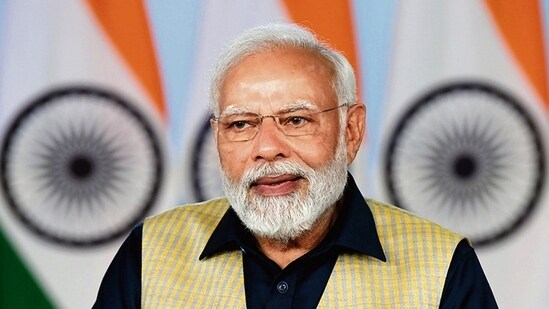How does the government’s “Amrit Kaal” strategy look in the context of India’s ongoing demographic evolution? Here are five charts that explain this in detail.
In an ideal world, retired workers should be able to take care of themselves by the pensions and savings accumulated through their savings. While this is increasingly becoming a crisis across the world, the situation is particularly bad in India. Data from the Periodic Labour Force Survey (PLFS) shows that 73% of overall workers (82% among private sector workers) don’t have any form of social security benefits. To be sure, these statistics exclude the self-employed and agricultural workers, who constitute roughly half of Indian workers individually, to whom the PLFS does not ask the question. This is one of the reasons a promise like restoration of the Old Pension Scheme, notwithstanding its fiscal costs, is finding renewed political traction in many parts of the country.
Future growth strategy will also need to account for state-wise demographic trends
To be sure, relying entirely on national projections to assess the impact of demographic changes on India’s economic prospects can be misleading. This is because of significant variation among states in terms of demographic transition. Some of India’s most industrialised and well-off states such as Tamil Nadu and Kerala will start ageing much before their non-rich counterparts like Bihar and Uttar Pradesh. While state-wise migration in India is unrestricted (barring some remote and strategically sensitive small states), it will take development of the currently non-industrialised and relatively poorer states to satisfy employment requirements of high population states around 2047.
While the government’s infrastructure push is the correct way to achieve this balance, the experience of its other flagship scheme, namely, Production Linked Incentive (PLI), suggests that big-ticket investments are still preferring to go to the currently industrialised states. It is here that the Amrit Kaal strategy is likely to face its biggest policy challenge.
Smart infrastructure does not mean smart workers
The nature of India’s manufacturing revolution, hoping it manages to achieve one, will be very different from the ones which happened in today’s advanced countries or even China. As manufacturing becomes more and more technology driven, workers will need to have higher skill-sets and cognitive abilities than just being able to slog it on the shop floor for a required number of hours. This means that the importance of a well-educated workforce for a manufacturing success story is more important than it has ever been.
It is here that India’s abysmal learning outcome indicators at the school level leave a gaping hole in its impressive enrolment statistics. The latest Annual Status of Education Report (Aser) survey shows that the situation has gone from bad to worse after the pandemic. It is here that the prioritisation of physical over human infrastructure – at least in terms of budgetary allocation – introduces a huge risk for the Amrit Kaal strategy.












0 Comments